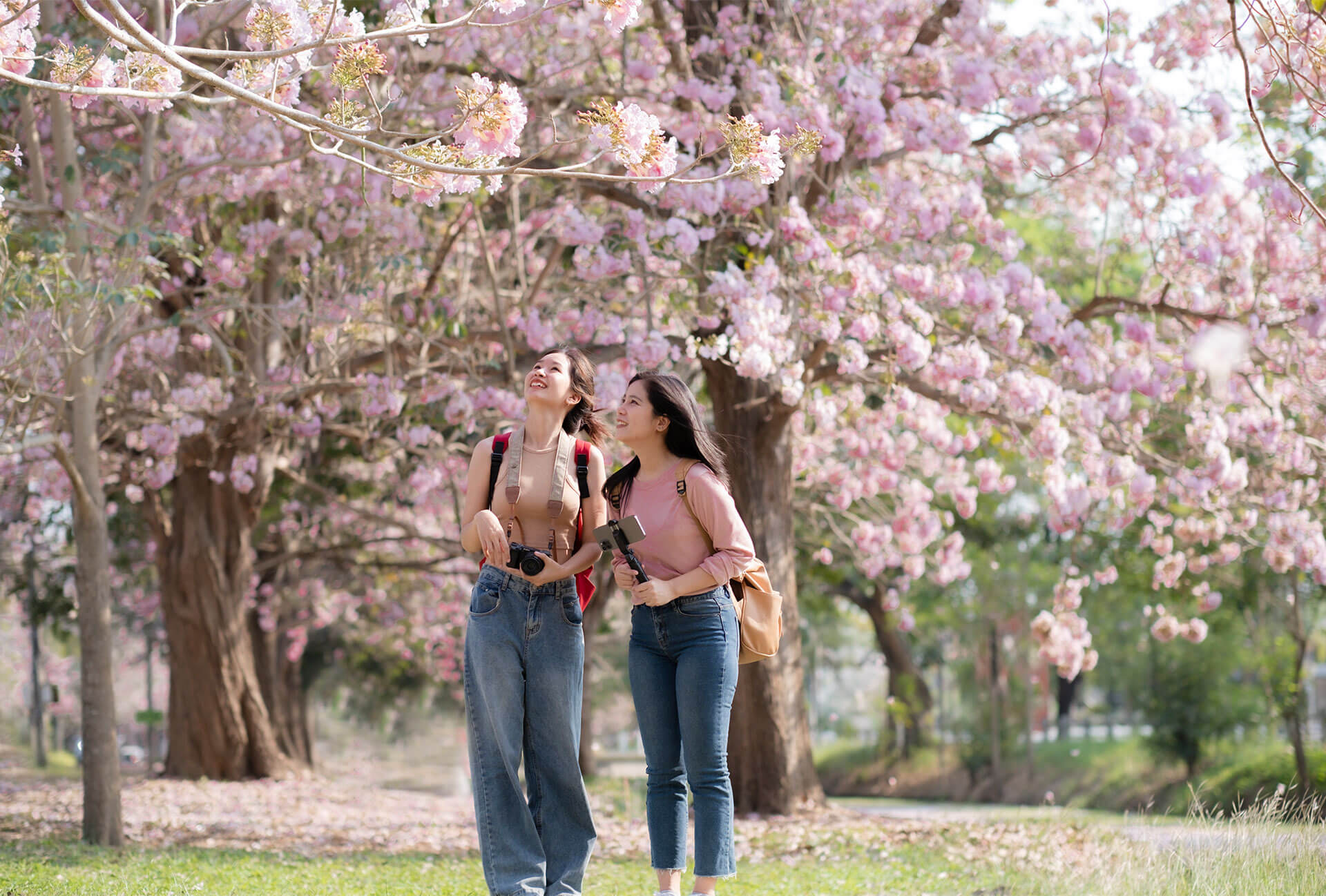
- On 19/01/2024
- In Blogs Travel Tips
- Tags:
Relaxing under the blossoms
Source: JNTO japan.travel
Spring really bursts into life in April as the brief period of blossoming cherry trees gives way to pleasing green foliage and milder temperatures. It's an easygoing time when you can make do with light jackets and long sleeved shirts. Research is a must when planning a trip to see the cherry blossom since peak periods vary significantly by location as well as year to year.
Know Before You Go
- A tarp and some refreshments are all you need for your very own hanami party—the local term for cherry blossom viewing
- Though you may miss the peak blossom period in one place, you're never more than a train ride away from somewhere still enjoying it
- Some of Japan's top-rated areas for hanami are in places you may have never heard of
There are over one hundred cherry tree varieties in Japan. A few of them are wild varieties native to Japan's forests, such as the Yamazakura, but the large majority of them have been cultivated by humans over the centuries for decorative use in gardens and parks. By far the most popular cherry tree variety today is the particularly pretty, cultivated Somei Yoshino.
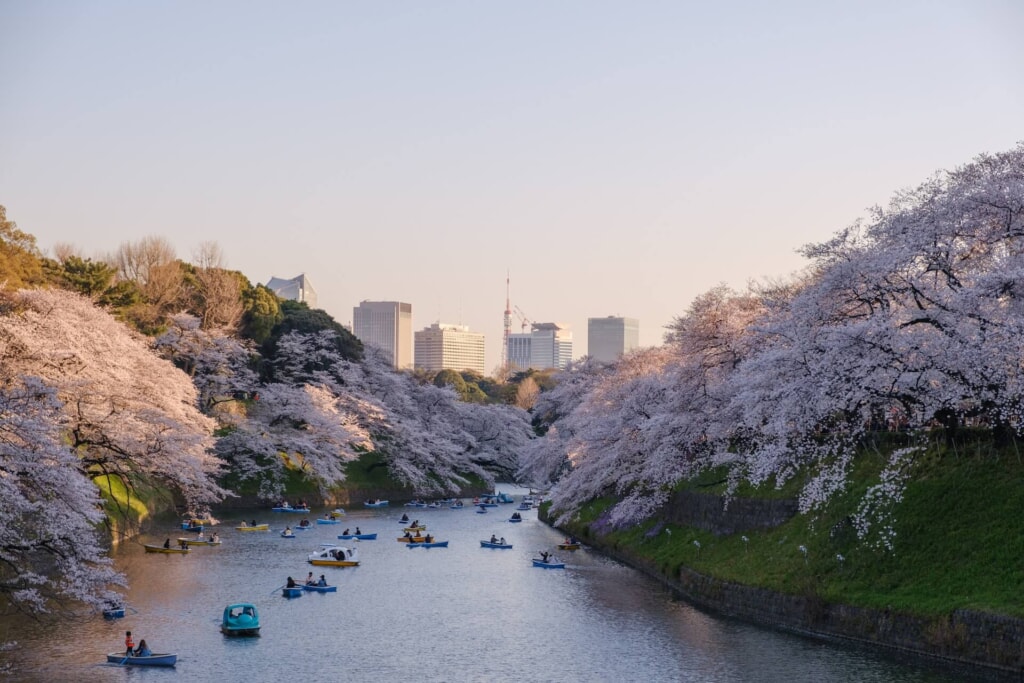
Relaxing under the blossoms
Japan's fiscal year ends in a flurry of activity on March 31, leaving much of the population in the mood to kick back. Hanami parties provide the leisure activity par excellence, as revelers stretch out on tarps to spend time with friends and family. While most cities have a go to spot, you can enjoy the hanami experience in any park or public space where the cherry trees are in bloom.
March-April
The Takayama Spring Festival is less dedicated to the cherry blossoms and more so to music and the float-like centerpieces called “Yatai.” If you’re looking for a more eclectic experience, check out the week-long Kamakura Festival. Horse riding, archery, dancing, and an outdoor tea ceremony are all highlights of the festival. The traditional Shizuka no Mai dance performance is based on the story of Lady Shizuka, a prominent figure of Japanese history and literature.
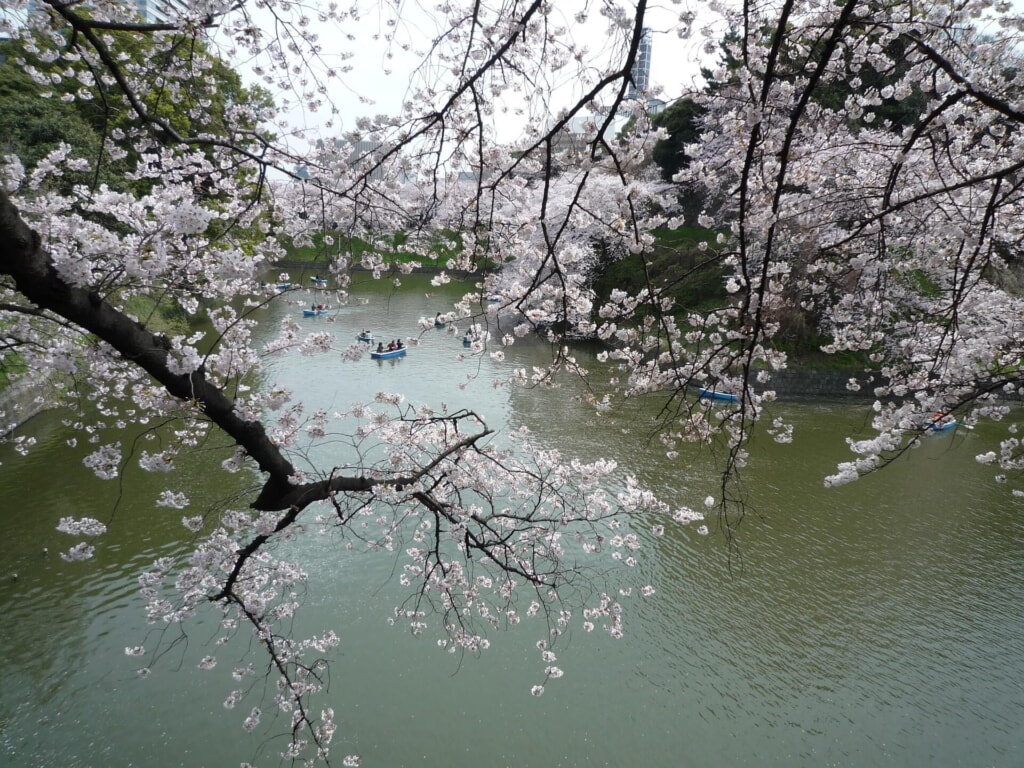
Hanami parties
When cherry blossoms bloom in Japan, people of every age and occupation gather under the trees for hanami: a time to admire, ponder, and celebrate. There is hardly a natural phenomenon as closely linked to Japanese beauty, culture, and philosophies as the fleeting cherry blossom blooms.
Majestic trees stretching their rose crowns towards the sky, tiny petals being whirled around by spring winds, and the pleasantly aching knowledge that this breathtaking beauty will perish after only a few days – this is the image of sakura.
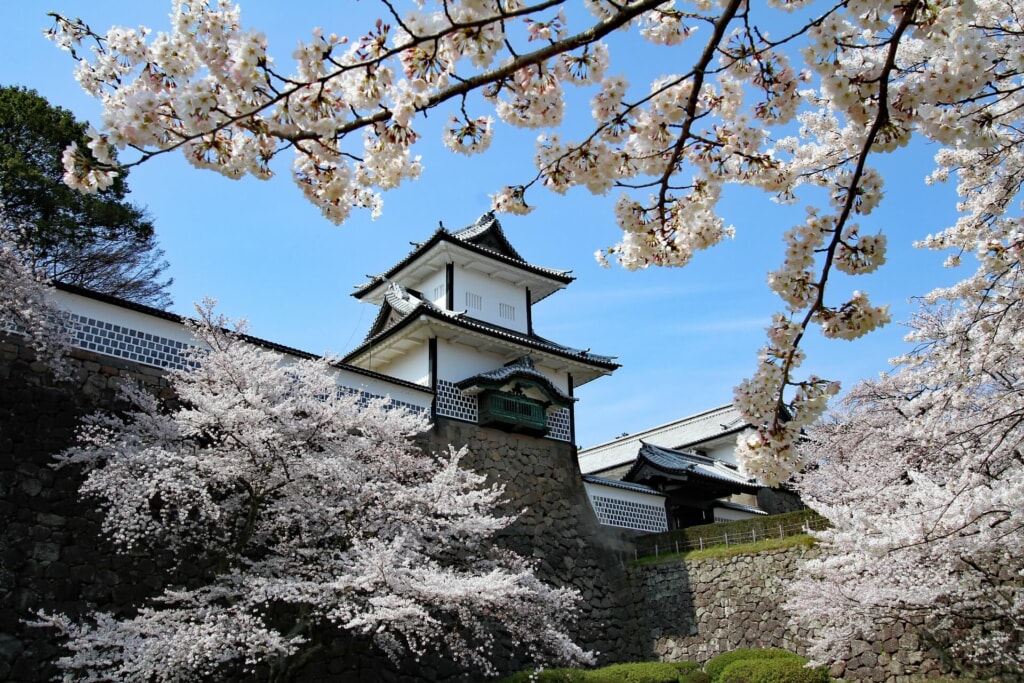
Under the lights
Takada Castle Site Park in Niigata and Hirosaki Park in Aomori are great spots for nighttime blossom viewing. Much thought goes into illuminating large numbers of trees with impressive results. Takada Park deserves special mention for its spacious castle grounds and impressive blossom corridor. Plan your trip to Takada in early to mid-April and Hirosaki, later, at the end of the month.
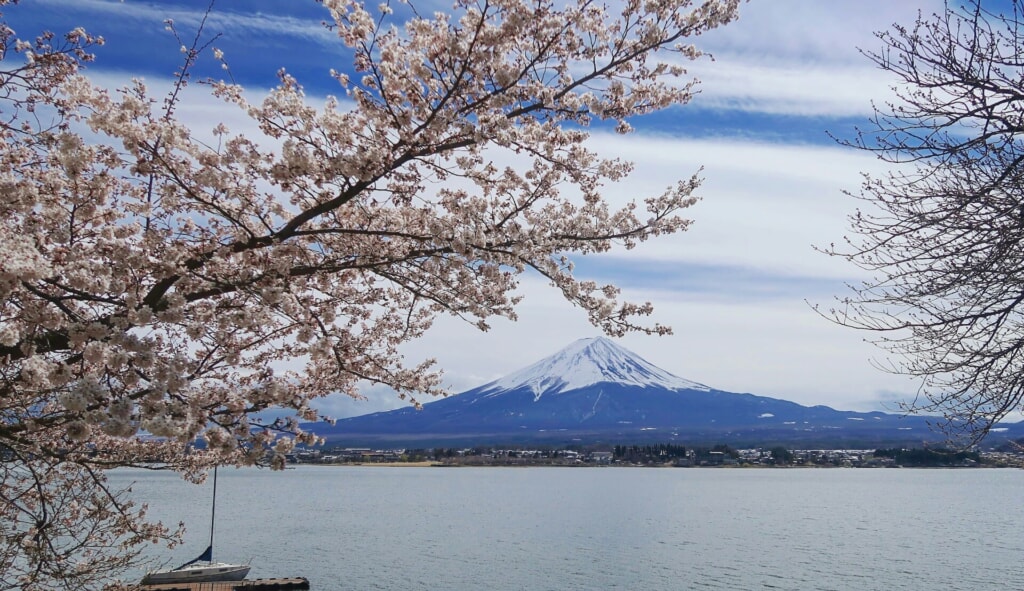
Cherry blossoms and Mt Fuji
Lake Kawaguchi and Fujiyoshida may not be household names outside Japan, but both are iconic places for viewing blossoms near Mt. Fuji. The former offers an attractive lakeside setting while the latter has a famous pagoda, often photographed and featured in promotional material. The blossoms in these areas are usually at their best between early and mid-April.
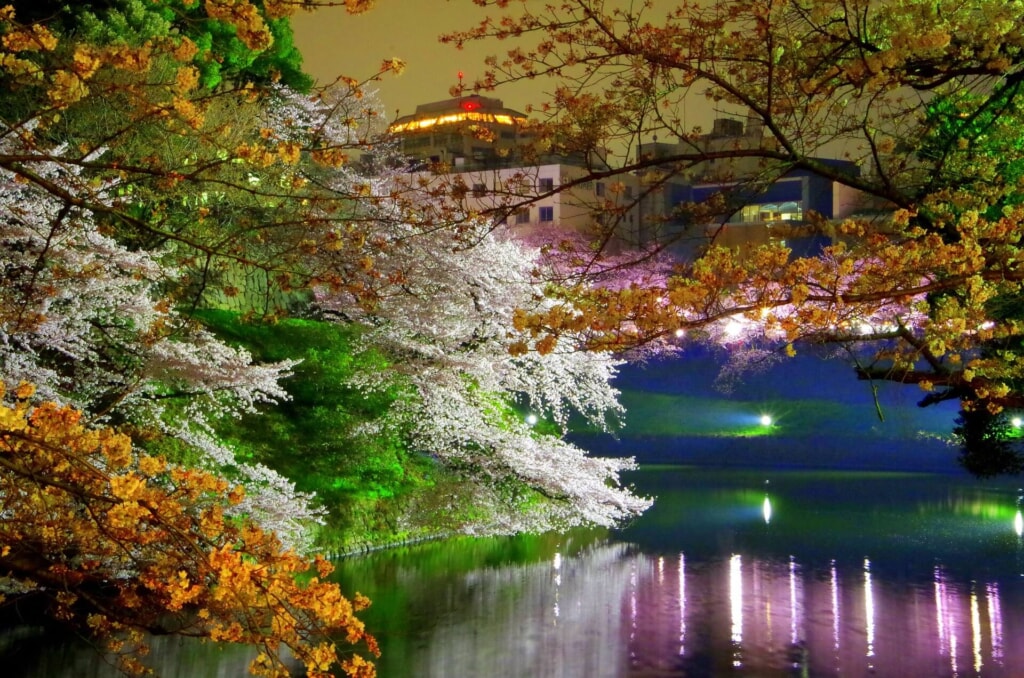
Late bloomers
From mid-April to early May, you can see a wonderful variety of late-blooming cherry trees in the northern Tohoku region, and in the mountainous areas of Nagano and Niigata. Perhaps the single most famous tree in the country blooms in Miharu Town, Fukushima Prefecture, from early to mid-April.
Farther north, Hirosaki holds a festival from late April to early May each year. With picturesque castle grounds and row boat rental nearby, the Hirosaki Cherry Blossom Festival has a reputation as one of Japan's top sakura celebrations.
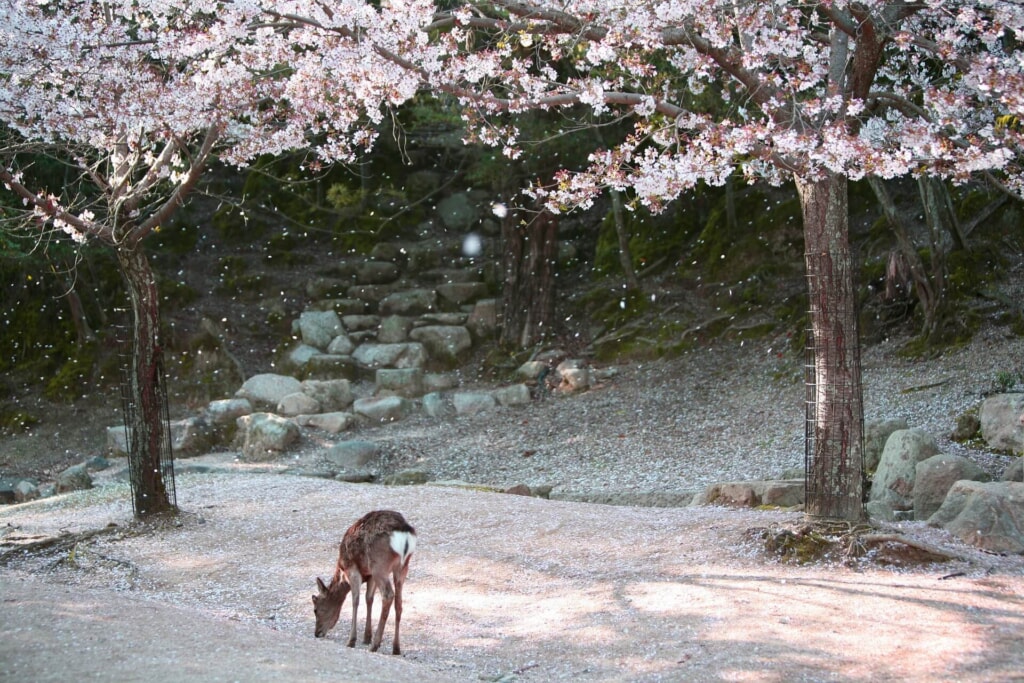
The Sakura Trail — Mt. Yoshino, Nara and Kyoto
Admire Japan's highly symbolic cherry trees in full splendor | Among the parks, shrines and temples of Nara, Yoshino and Kyoto, discover the beauty and symbolism of Japan's most iconic flower.
Cherry blossoms not only signal the coming of spring, but they are also a common motif in the arts and literature to express the fragility and transience of life itself. They have earned the admiration of visitors from around the world, who flock to Japan's temples and shrines, riverbanks, and mountains, to see them.
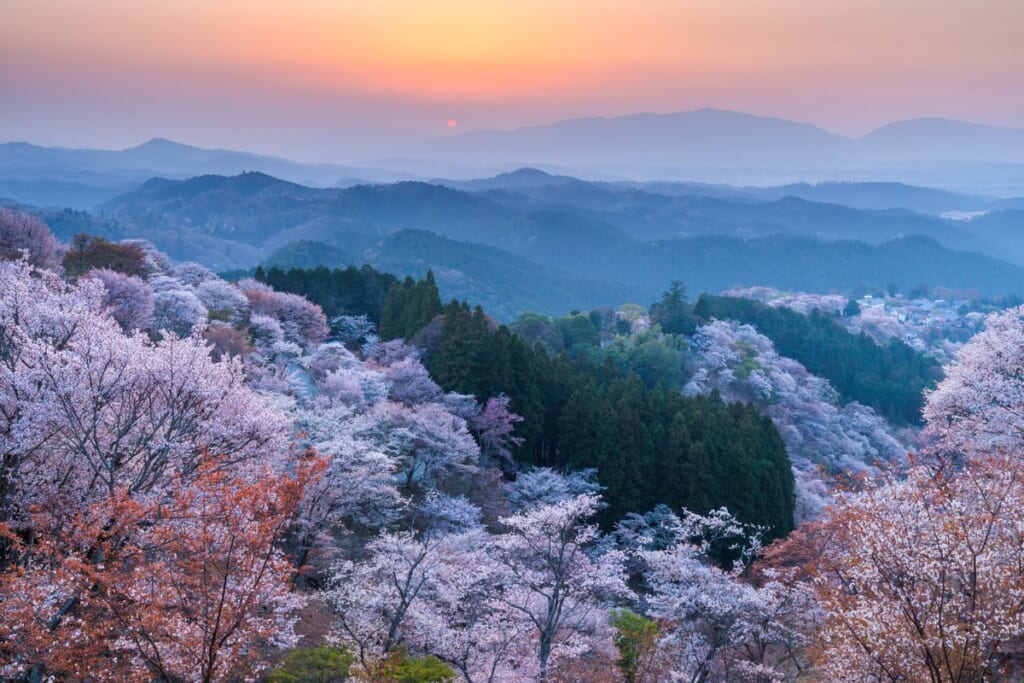
Yoshino Cherry Blossoms
Mt. Yoshino and its 1000 cherry trees | Mt. Yoshino, a UNESCO World Heritage site, is part of a sprawling national park in Nara Prefecture. The area is known as «Ichimoku ni senbon», meaning «the luxury of seeing 1000 cherry trees». Indeed, there are some 30,000 here. The spectacle features heavily in Japanese classical literature, poetry, and song, and continues to inspire visitors to this day.
You will encounter numerous shrines and temples on Mt. Yoshino well over a century old, including a 14th-century imperial palace and 34-meter-tall Zao-do Hall, and perhaps even glimpse some practitioners of the mysterious Shugendo religion—or at least hear the sound of the conch shells they carry echo in the hills.
From Kintetsu Yoshino Station there is a ropeway and bus service to the upper part of the mountain during the cherry blossom season. Check in advance to confirm the ropeway is in operation. When the ropeway is closed, substitute buses operate instead.
Once you are there, find a spot and enjoy a picnic among the cherry blossoms of kakinoha sushi: bite-sized vinegared rice balls topped with mackerel, salmon, or small sea bream, and wrapped with persimmon leaf.
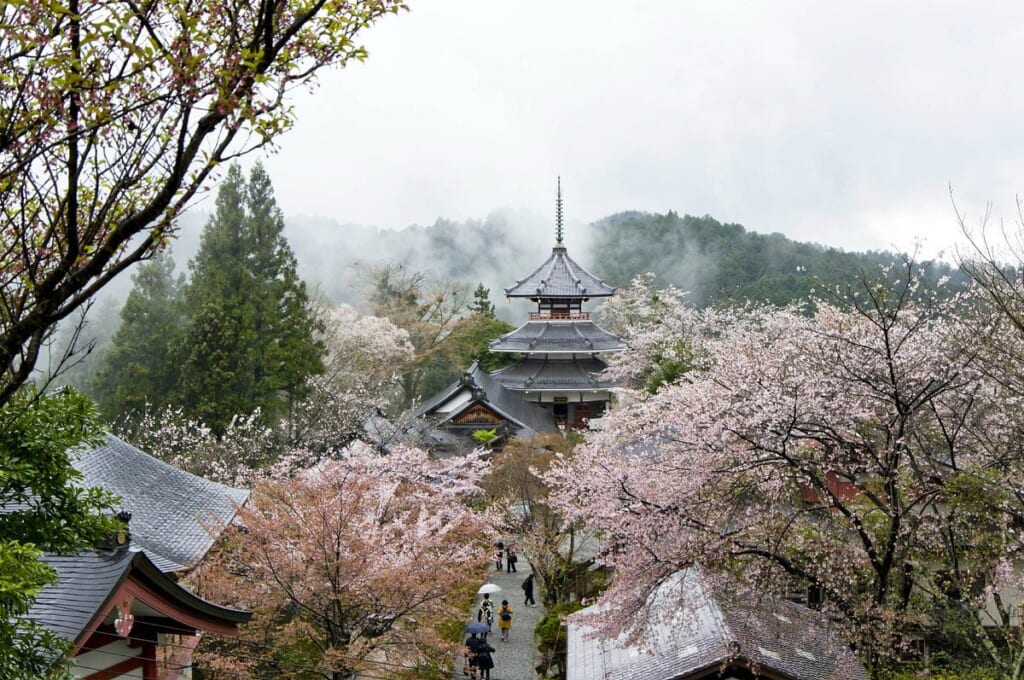
Yoshino Chogu Ruins
Imperial views of the cherry blossoms | This recommended blossom-viewing spot was formerly the site of a court in exile: that of the 14th-century emperor Go-Daigo, who unsuccessfully fought a bitter battle against the warrior Ashikaga clan, fleeing to Mt. Yoshino. There are no ruins here but a pagoda belonging to the Kinpusenji Temple grounds.
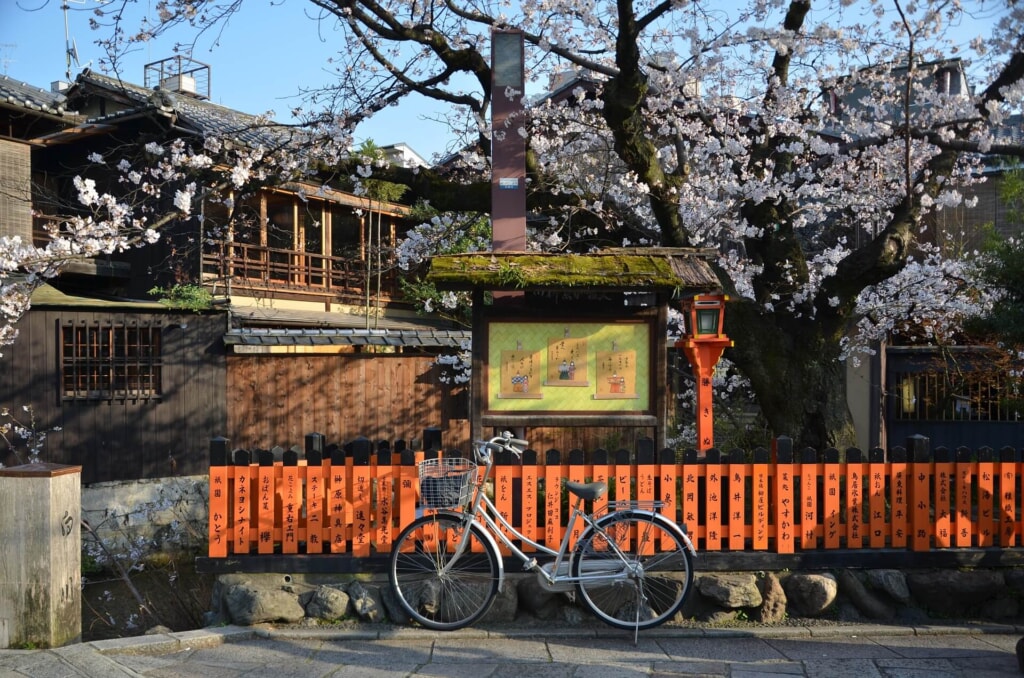
KYOTO
Explore eastern Kyoto along the cherry blossom trail
One of the few cities left intact during World War II, the old imperial capital of Kyoto remains. It is just the place to contemplate tranquil temple gardens, watch exquisite traditional theater and dance, explore artisan craft workshops, indulge in fine cuisine, and much more.
The Tetsugaku-no-Michi or Philosopher’s Path is a very pleasant route that meanders alongside a cherry-tree-lined canal, with views of the Higashiyama hills in the distance. Start your walk after a visit to Ginkakuji Temple, the Silver Pavilion, a five-minute walk from the canal. It is especially popular for its gorgeous Somei Yoshino cherry trees—which also attract crowds. A stroll during the early hours here is tranquil and highly recommended.
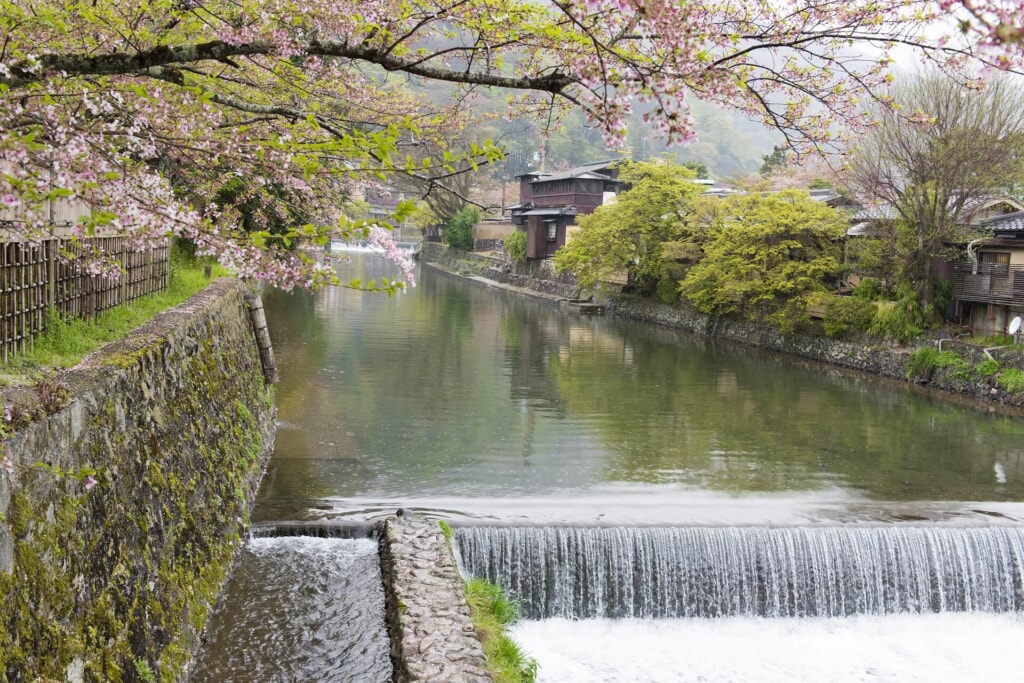
A short distance further from the end of the Philosopher’s Palk you will enter the complex of Nanzenji Temple , once one of the most important Zen temples in Japan. Its enormous, wooden Sanmon Gate was built in 1628 to commemorate those who had died at the siege of Osaka Castle. Climb to the top of the gate for an even better view of the gorgeous colours.
A trail behind Nanzenji's brick aqueduct leads to Keage Incline. Visitors can walk freely through this rather romantic spot: an abandoned railway track, lined with cherry blossom trees, runs between old waterways.
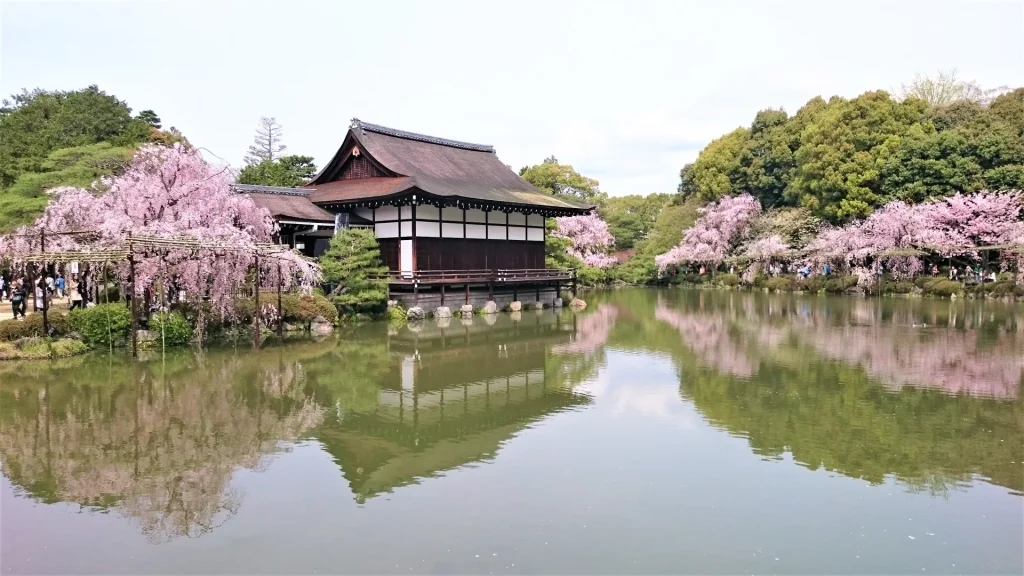
Heian-jingu Shrine
The weeping cherry trees of Heian-jingu | Passing through the giant torii gate you may wonder why Heian-jingu Shrine looks so distinct from other shrines in Kyoto. The shrine was built in 1895 to resemble Chodoin Temple from the 8th century when Kyoto was the capital, Heian-kyo. In spring, it is famous for the weeping cherry blossoms that hang over the shrine pavilions, making it a popular cherry blossom viewing spot.
Take in the dimly-lit blossoms along the Shirakawa River | Gion is arguably an area best explored by night, and it is particularly special here on this stretch along the Shirakawa River: walking along this street you will be able to peer into the interiors of the exclusive teahouses opposite, spot kimono-clad figures shuffling along the cobbles, and of course, admire the dimly-lit blossom. There is also a good chance you may catch a glimpse of the local geiko (geisha) after-hours.
Gion Shirakawa
A more accessible experience is the cultural show held everyday at Gion Corner at the end of Hanami-koji. Aimed at foreign tourists, the show is a highly concentrated introduction to several traditional Japanese arts and include short performances of a tea ceremony, ikebana, bunraku, Kyogen comic plays and dances performed by real maiko. If you are in Kyoto in April, check out the Miyako Odori with daily dance performances by maiko.
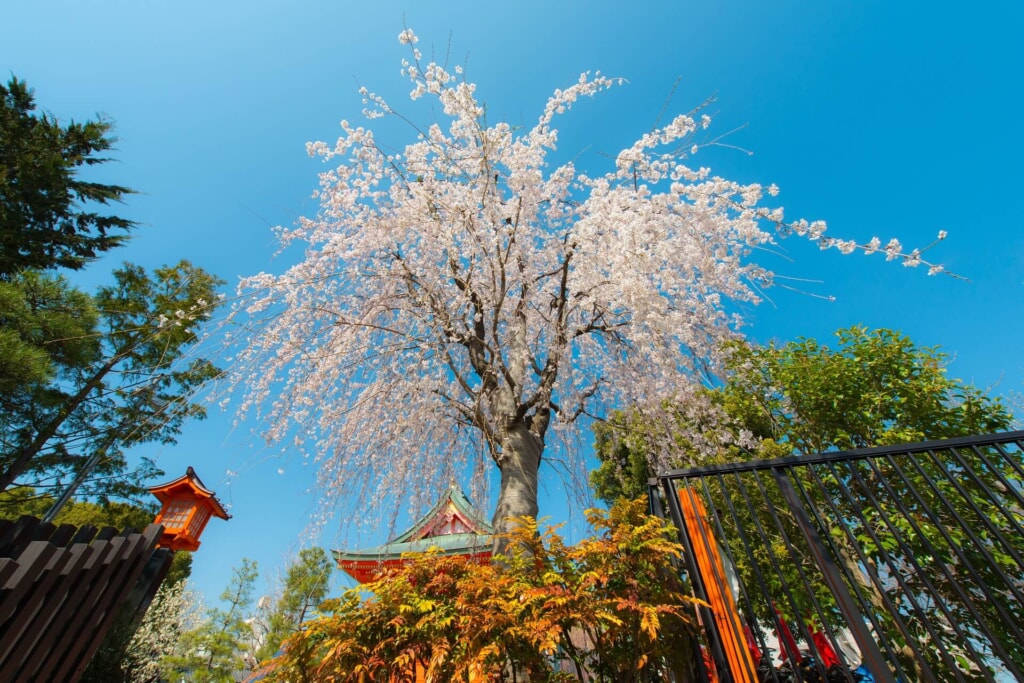
Experience Endless Discovery in Japan with Thien Xuan Travel
Thiên Xuân Travel | Live Your Travel Dreams!
Park 2, 208 Nguyen Huu Canh Street, Ward 22,
Binh Thanh District, Ho Chi Minh City, Vietnam
📨 booking@thienxuantravel.com
☎️ +84 888 890 898 — 0938 558 228
Office in the United States
14114 Beech Glen Dr, Houston, TX 77083
☎️ +1 (281) 906-2744

